This blog post is written by Paul Rosengard, Consultant to the Peaceful Playgrounds Foundation.
Follow Paul at @paulrosengard
Grow 4 It!
Part 5 – the “T” in “Grow 4 It!” stands for, “Tracking Your Plan”
 Hello and welcome back to this series on professional growth – for physical educators! If you haven’t already read all 4 parts of “Grow4It!” just scroll down and you’ll see them sequenced.
Hello and welcome back to this series on professional growth – for physical educators! If you haven’t already read all 4 parts of “Grow4It!” just scroll down and you’ll see them sequenced.
Over the past 8 weeks we’ve “G”athered resources, human and otherwise; we’ve “4”mulated (formulated) our plan; “I”mplemented it, and now we’re in the process of “T”racking it. So, you’ll see we’re also running out of letters in our Grow4It! acronym; and that can only mean this is the last article in this series! (Whew! Says the author, it must be summer…)
As with previous posts, I’ve asked people in my PLN to weigh in with their best tips and advice. These folks are all terrific and I strongly suggest you follow them on twitter — as I do.
The question I posed was,
“What tips or advice do you have for physical educators who are tracking/monitoring their professional growth plans?”
I think you’ll enjoy their insightful comments. Before you start, please allow me to manage your expectations a wee bit. Not all responses directly answered the question – and that’s OK! They all offer excellent pro-growth tips I didn’t want you to miss.
Here we go!
MacKenzie Mushel-Ellis (@MacKenzieColo) is a Dance Educator who in 2014 was both the 2014 Dance Teacher of the Year for Shape America and Central District TOY. MacKenzie suggested, “Monitoring progress towards your goals is essential whether they are professional or personal. Making note of what is working and/or challenging at regular intervals keeps me focused and MOTIVATED! I have recently been using Evernote to document progress and organize resources that support my goals. This way I can archive and access my reflections from various devices or locations. Setting periodic “check-in” dates/reminders is also helpful. No matter the method of tracking, making a habit of reflecting on your progress is vital to your success.”
Denise Renee Brown (@teachnpe) is a dynamic K-5 physical educator in Arlington VA (and a die-hard Skins fan!). Denise offered these thoughts,“First, attend PD’s. Be a lifelong learner. Walk away with ideas you can implement, tweek, or expand upon. 2nd, reflect often or journal personal growth. Observe peers, video lessons, present at workshops. 3rd, maintain a professional portfolio.”
Nancy Raso Eklund (@NancyEklund) was a past NASPE National Teacher of the Year, a Disney American Teacher, and hails from the great state of Wyoming. Nancy shared, “Once your professional growth plan is in place you often ask, ‘Is the plan working? What do I need to change? What are the resources I need to keep it on track?’ Document your work and collect artifacts and evidence through an e-portfolio. Identify the resources you need, find collaborative support, and most of all continue your action plan by being proactive and sharing your short term successes. “
Tanya R. Freeman (@TanyaRFreeman) is a frequent grant recipient and physical education specialist who teaches children in grades 4-5 in Cinton, North Carolina. Tanya weighed in with, “At the beginning of each school year I reflect on what my strengths and weaknesses are. I create a plan with goals I wish to achieve and share them with my principal, co-workers, students and family. I find sharing this information holds me accountable. I go back and revisit my plan every 2-3 months to see if I’m making progress. If I am, good! If not, I re-evaluate what I’m doing and make necessary changes so I show growth.”
Jennifer Peterson (@OESPhysed) is a K-5 specialist and a Past-President of Iowa-AHPERD. Jennifer responded this way, “I started a PE shared resource folder over a year ago. I saw everyone sharing ideas, several people would ask for the idea (which was awesome) so I thought, hey why not have a spot for ANYONE to access PE activities. The folder has over 600 people – I had no idea it would be so popular. I can’t think of another profession (at least in the teaching field) that has this much passion and connectivity with each other.”
Stephanie Sandino (@smsandino) is a K-6 elementary physical education specialist in Lake Elsinore, CA. Stephanie chimed in with,“For the past year I’ve been using my drives to and from work to (or any long drive for that matter) to engage my mind on PE topics for my own professional growth. I listen to podcasts (e.g., Jorge Rodriguez’s, @PhysedNow, Voxcast). I find these expand my thinking, help me reflect, and give me the courage to experiment with my own classes. PD on the go as I like to call it!”
Paul’s Pointers:
Allow me to reinforce and embellish our contributors’ thoughts with a few of my own…
- Accomplishments: Your pro-growth plan is also a tool that can be used to document your successes and broadcast your accomplishments. As you note what you’ve done (e.g., courses taken, conferences attended, podcasts listened to, PE chats you participated in, etc.) you are not only collecting experiences that help you become a better teacher, you are accumulating nuggets that make you a valued employee! If you are tracking everything you are doing and when you’re doing it, you are gathering evidence. Share what you’ve learned, how you’re applying it, and subsequent success stories (perhaps with pictures, clippings, video) with your Principal/Headmaster. Tenure, raises, status, exposure, all can be very positive for your career and help motivate you to reach greater heights.
- What is Assessed is Done: I know each of us is assessed by someone – our Principal, our Professor, our mother, so maybe we don’t feel the need to assess ourselves. In the context of a professional growth plan, it’s essential to have periodic check-ins (posted in your calendar) where you monitor your progress (self-assess) towards goals and give yourself a pat on the back – or — a motivating kick a bit lower…
- Track Credential Renewal Activities. I asked my colleagues on twitter if they knew of any tools specific to tracking a physical educator’s professional growth (besides the one I’m familiar with) and received no responses. However, most states requires teachers to develop and track their training and courses as part of periodic credential renewal processes. As many have said above, add your informal professional development experiences to your teacher renewal folder creating a professional development portfolio that provides a more complete picture of your learning experience with some of the suggestions above. When working towards this objective I hope you’ll reflect on the contents of the blog when developing your personal professional development portfolio to track your professional growth.
Wrapping It Up:
We’ve come to the end of our professional growth journey together! We’ve “G”athered resources, “4”mulated a plan, “I”mplemented that plan, and “T”racked our plan’s progress. If you missed any of the previous posts, I hope you’ll give them a read.
Finally, please make a little time to reflect on the key points from this article and past installments too, and apply them to your own professional growth plan.
Until next time, see you @paulrosengard and/or email me your thoughts about this series, pr********@*******su.edu
An Acronym to Inspire Physical Educators to Grow Professionally
Part 4 – the “I” in “Grow 4 It!” stands for, “Implement Your Plan”
 Greetings! I hope by now you’re read all 3 parts of “Grow4It!” If not, just scroll down and catch up. We’ll wait for you to come back…Welcome back! So now you know that everything we’ve done thus far has led us down this personal, professional growth path. We’ve “G”athered resources, human and otherwise; we’ve “4”mulated (formulated) our plan; and now we’re in the process of “I”mplementing it.
Greetings! I hope by now you’re read all 3 parts of “Grow4It!” If not, just scroll down and catch up. We’ll wait for you to come back…Welcome back! So now you know that everything we’ve done thus far has led us down this personal, professional growth path. We’ve “G”athered resources, human and otherwise; we’ve “4”mulated (formulated) our plan; and now we’re in the process of “I”mplementing it.
I’ve asked people in my PLN to weigh in with their best tips and advice. These folks are all terrific and I strongly suggest you follow them on twitter — as I do.The question I posed was,“What tips or advice do you have for physical educators in the process of implementing their professional growth plans?” I didn’t want to provide a lot of detail that might funnel their responses into a predictable pattern. I think you’ll enjoy their candid and insightful comments.
Here we go!
Martha James-Hassan (@drjameshassan) is an Assistant Professor of Physical Education at Morgan State University in Baltimore, MD., and a nationally known presenter. Martha shared the following:
“Employ an “and” strategy. When confronted with a challenge, be it to implement a new curriculum, negotiate for resources, or engage with challenging students, acknowledge the obstacles AND the possibilities. Replace “buts” with ands”. E.g., rather than saying things like, “That’s a good idea, BUT I can’t do that in my school,” shift to, “That’s a good idea, AND to implement it I’ll need _____________ .”
Pam Powers (@psquaredpe) is a former SW District TOY, star innovator and presenter, now with letsmoveschools.org. Pam shared 3 tips:
1. If at first your lesson does not succeed, try again! It could be a poorly constructed lesson, or the wrong lesson for a specific class.
2.If you are constantly revising, editing and changing your overall scope and sequence each year, you are a rockstar!
3. The day you decide to stop learning, attending workshops, reading, networking, this is the day you should decide to stop teaching.”
Jeff Couvy is a full-time physical educator in Southern California working as a K-5 specialist at a Lutheran School in Orange. Jeff responded to the question by saying:
“The best advice I can offer is to not be afraid to confront your weaknesses or biggest challenges. It’s easy to invest energy in developing those areas where we already feel successful and enjoy teaching, but true growth as an educator is committing to develop those areas which are the biggest personal challenges and most intimidating.”
Tim Brusseau (@timbrusseau) is an Asst. Professor and Director of Physical Education Teacher Education at the University of Utah. Tim responded this way:
1. Surround yourself with a great support team, i.e., mentor teachers, peers, others from the profession who can be an ear or help in the good times and tough times when teaching.
2. Be engaged professionally, this helps confirm your ideas and/or stimulates more growth.
3. Be willing to try new idea and concepts. We learn best when we fail so be brave in your efforts.”
Matthew Bassett (@PhysEdApps) is a NBCT and physical educator who teaches K-8th grade students at San Jose Charter Academy in Southern CA. Here’s how Matt answered the question:
“During the early part of my career (Note: Matt has been teaching 15 years) I felt like an island. Going to conferences was tough because I didn’t know a lot of people. Social media has helped me in this department. I’ve found I can talk with other teachers and push myself to learn and grow. Via social media, I can outreach at any time, ask questions, or provide insight into my class. I don’t feel alone anymore. “
Patty Kestell (@pk_lv2teachpe) is a K-5 “PhyEd” specialist at a public school in Wisconsin — and was the National Elementary TOY in 2013. Patty shared these insights:
“Personal reflection should play a huge role when implementing a professional growth plan. In addition to the basic questions such as, ‘What are my strengths? What areas of my teaching do I need to improve? What resources do I need, and what kind of PD should I do to make it happen?’ Also ask yourself, ‘When thinking about assessment and student growth, how will I know my students have learned what they need to know to be physically literate? What can I do to help my students become more self-directed learners?”
Joe McCarthy (@JoeMcCarthy09) is an elementary physical educator and 2012 Minnesota TOY. Joe is a frequent presenter and webinar provider. Joe said:
“When I think of pro growth, I think how can I strive to instill a sense of ‘life-long learning’ with the 700 students I work with everyday at my K-5 school? It’s important that the goals you are working on help to improve the learning needs of students, as that is the main reason we are in this profession. How will your pro growth plan goals support the learning needs of students in your classroom?”
Naomi Hartl (@MissHartl) is a former K-12 physical educator currently serving as SPARK’s Development and Technology Specialist living in Oregon. Naomi shared:
“I believe one of the most important tips is to surround yourself with a small group of passionate and dedicated educators. This group should help you reflect on your growth plan, hold you accountable to your goals, and challenge your ideas of teaching and learning to help push your thinking forward.”
Brett Fuller (@BrettAFuller) is a former secondary physical educator who is the Milwaukee Public Schools Health and Physical Education Curriculum Specialist. Brett responded this way:
“When I think of a pro-growth plan I think of making a systems change/culture change. Making a true systems change, people need to be patient because it usually takes three years for others to truly buy into that change.”
Seth Martin (@smartintahoe) is an elementary physical educator who was the 2010 CA Gov. Council TOY and is currently serving as VP-Elect for CAHPERD. Seth shared this thought:
“I think the biggest piece of advice is go after one aspect you want to improve at a time, and when you go after it, go all the way! Read books, look for PD sessions, and start testing strategies. Fine tune one thing before you go after another part of your pro-growth plan.”
Sarah G-H (@GHsaysRockChalk) is an exemplary middle school physical educator in St. Louis, MO who also happens to be a prolific Twitter contributor. Sarah responded this way:
“At the beginning of each school year I write down 3-4 big goals I want to achieve throughout the year. I keep them in a file and refer to them often. It’s really fun to look at the goals from previous year, too!
Closing Thoughts:
Allow me to reinforce and supplement my colleagues’ excellent suggestions with a few of my own:
- Stay Organized: It’s easy to let goals go, or forget to do that quarterly videotape of your teaching, or not register in time for a local conference. So, don’t hold things to memory – write them in your calendar, even if it’s a year or more in advance. Not just on the date they’re due, but give yourself a week’s advance notice that a task is coming up soon.
- Don’t Wait Until You’re Thirsty to go to the Well: If you’ve followed me for a while, you know I say this A LOT. In this context I’m referring to your PLN and maintaining relationships. Once you’ve recruited your pack of mentors and challengers, stay in touch. This is another way your calendar can help you. Enter reminders (ticklers) to (e.g.) outreach to that special Professor a couple times a year. And since you’re implementing a growth plan, you’ll need inspiration from time to time. Who inspires you to want to learn more, do new things, approach challenges with a different perspective? That’s a valuable mentor indeed. Stay in touch with her/him.
- Press Pause, not Stop: Whatever we do in this life, we WILL run into obstacles along the way. Pro growth plans are no different. Plans change and we need to recalibrate. Sometimes we fulfill all the tasks and goals we set for ourselves, sometimes we don’t. We change schools, jobs, districts. It’s a process – one with no outcome or finish line because we’re always growing professionally. So while navigating your personal winding road and its inevitable pitfalls, be good to yourself. If you find you’re off plan for a while, think of it as pressing pause – not stop. It’s a mindset that you’re not giving up or falling too far behind, you’re just taking a short break, and you WILL pick up right where you left off.
Wrapping It Up:
So far you’ve “G”athered resources, and “4”mulated a Plan. Next time we’ll talk about the “T” in “Grow4It” which stands for “T”racking.”
I hope you’ll reflect on the key points from this article and apply them to your own professional growth plan.
See you next time for the T in “T”racking and Part 5 in our Grow4It!! series.
This post brought to you by Peaceful Playgrounds Foundation
Follow Peaceful Playgrounds @recessdoctor
A 4-Part blog on Professional Growth for Physical Educator
Part 3 – the “4” in Grow 4 It! stands for “4mulate a Plan”
Initial Thoughts on Topic:
As I prepared to write this section, I learned there is no shortage of material on the topic of how to create a professional growth plan. Of course, I had my own experiences as a physical education teacher (coach, athletic director) to reflect upon too – 12+ years at K-12 and another 11 at the university level; and as an employer, I wrote evaluations and worked with teammates on their professional growth plans. I felt ready to profess and describe a number of steps in the process. But then I realized, hearing directly from others in various stages of their own professional growth plans might be the most effective way to convey useful information – then I can chime in at the end to summarize and supplement. Now that you know the format, let’s get started.
First, BIG thanks to all the terrific professionals who weighed in on this topic and contributed to the first section below. I encourage you to follow them on Twitter because they have a lot to share.
- Fielding the Question. “How would you suggest PE folks organize or plan their own professional growth evolution?”
First, let’s hear from a 1st year physical educator, Tyler McCune (@mrmccunepe) who teaches at a K-5 school in Illinois:
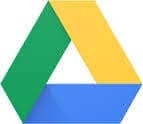 “I’m really just trying to stay afloat this year, stay on top of my responsibilities. I do have some things I wish I would have known when I started. First is to create a Google drive or drop box and start organizing information by category. I wasn’t aware of the vast amount of info out there and if you try and remember it all it won’t happen. Get organized!”
“I’m really just trying to stay afloat this year, stay on top of my responsibilities. I do have some things I wish I would have known when I started. First is to create a Google drive or drop box and start organizing information by category. I wasn’t aware of the vast amount of info out there and if you try and remember it all it won’t happen. Get organized!”
I also heard from Ira Kleiman (@irakleiman) who is a Headmaster at K-8 school in Michigan. From his administrator’s perspective, Ira said,
 “My Deans meet with teachers after observations and mutually decide on goals based on their observation rubric. I ask my Deans, “Where is your teacher on the rubric and what are we doing to help her/him grow professionally?” Feedback is the breakfast of champions.
“My Deans meet with teachers after observations and mutually decide on goals based on their observation rubric. I ask my Deans, “Where is your teacher on the rubric and what are we doing to help her/him grow professionally?” Feedback is the breakfast of champions.
Now let’s hear from Jamie Sparks (@Jamiesparkscsh) who is KY SHAPE Network Director, KYAHPERD President, and serves in a variety of other leadership roles for his state and on the SPARK Innovation Team.
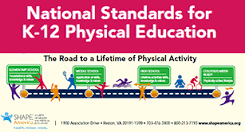 “In the KY system of teacher effectiveness we defined our measurement by identifying enduring skills based on National PE standards. It’s critical to move toward the collective goal of 50 Million Strong so we have a unified voice in measuring physical literacy. Many administrators have not experienced quality physical education themselves so educating them on physical literacy along with appropriate assessment strategies/outcomes is an equally important part of the process. “
“In the KY system of teacher effectiveness we defined our measurement by identifying enduring skills based on National PE standards. It’s critical to move toward the collective goal of 50 Million Strong so we have a unified voice in measuring physical literacy. Many administrators have not experienced quality physical education themselves so educating them on physical literacy along with appropriate assessment strategies/outcomes is an equally important part of the process. “
 Time to hear from Paul Zientarski (@paulzientarski) who is a retired physical educator from highly awarded Naperville North High School in Illinois, who continues to remain active as a Consultant. Paul told me,
Time to hear from Paul Zientarski (@paulzientarski) who is a retired physical educator from highly awarded Naperville North High School in Illinois, who continues to remain active as a Consultant. Paul told me,
“It’s important to have an open mind. I received valuable information from physiologists, pro athletes, professors, coaches, present and past students and peers (and more). That’s because I never thought I had all the answers. I constantly looked to improve my teaching. I was never afraid to make changes and admit I was wrong. I was 100x better as a teacher in my 40th year than I was in my 1st year when I thought I was smart.”
What does Stephen Jefferies, Professor Emeritus of Central WA University and SHAPE America President 2015 have to say on this topic?
 “The most important advice I can share is to actually take the time to create a growth plan. As with all achievements in life, the most important step is probably the first one – the decision to act. I really like this quote, ‘The best way to predict the future is to create it yourself.”
“The most important advice I can share is to actually take the time to create a growth plan. As with all achievements in life, the most important step is probably the first one – the decision to act. I really like this quote, ‘The best way to predict the future is to create it yourself.”
Steve added, “It’s easy to feel isolated teaching by oneself or surrounded by colleagues who don’t share your excitement and motivation for teaching Health and Physical Education. The more you connect with your teaching colleagues at conferences, workshops, and online, the easier it becomes to stay excited about teaching.”
Jorge Rodriguez (@physednow) is the Lead and Key Physical Education Teacher for Houston Independent School District in Texas. Jorge is also a member of the SPARK Innovation Team. Jorge advised,
 “When considering a professional growth plan, a teacher should first identify and reflect on personal strengths and weaknesses. Then keep an open mind to the most efficient means of improvement. Technology has democratized professional development to a point where individuals can maximize their own professional growth.”
“When considering a professional growth plan, a teacher should first identify and reflect on personal strengths and weaknesses. Then keep an open mind to the most efficient means of improvement. Technology has democratized professional development to a point where individuals can maximize their own professional growth.”
Andrew Milne (@carmelhealth) is a Health and Physical Education teacher in Illinois who hails originally from London. Here’s what Andrew shared with me on our topic:
 “I would argue that openly sharing your goals with those around you, even your students, holds you accountable. It’s easy to let yourself down and not work at your goals. This is less likely if you share your goal, as you don’t want to disappoint those with whom you shared your goals. Finally, I like the idea of ‘one word.’ This is where you choose your word for the year. This word remains in the back of your mind and shapes your behavior throughout the year. My word for 2016 is Provocation. 2015 was Advocacy. 2014 was Resilience.”
“I would argue that openly sharing your goals with those around you, even your students, holds you accountable. It’s easy to let yourself down and not work at your goals. This is less likely if you share your goal, as you don’t want to disappoint those with whom you shared your goals. Finally, I like the idea of ‘one word.’ This is where you choose your word for the year. This word remains in the back of your mind and shapes your behavior throughout the year. My word for 2016 is Provocation. 2015 was Advocacy. 2014 was Resilience.”
Lynn Hefele (@lynnhefele) is a former elementary TOY (who has taught all levels) who teaches physical education in New York State. Lynn weighed in by saying,
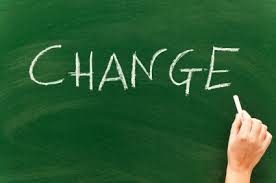 “I think the most important thing to do before creating a personal growth plan is to really identify what makes a ‘highly effective’ teacher. I would suggest reading the Danielson Framework. The rest is simple: Set a long term goal, create 3-5 short term goals with a timeline to achieve them, then reflect, revise, reflect, revise, reflect revise!”
“I think the most important thing to do before creating a personal growth plan is to really identify what makes a ‘highly effective’ teacher. I would suggest reading the Danielson Framework. The rest is simple: Set a long term goal, create 3-5 short term goals with a timeline to achieve them, then reflect, revise, reflect, revise, reflect revise!”
III. Summarizing:
Here are some of the key points that resonated with me:
- Prepare by studying up (E.g., Danielson Framework, “Measuring Teacher Effectiveness in Physical Education” by Judy Rink, “20 Indicators of Effective Physical Education Instruction” and many more related pages at www.shapeamerica.org). Making the time to actually create a growth plan is a great start. (Thanks Steve.)
- Take an honest deep dive into your own teaching style and skill sets (Thanks Jorge). Try using my “5 Characteristics of a Great (and Effective) Teacher” from Part 1 of this series to guide you.
- Review your district guidelines and what your Principal, or whoever is evaluating your performance, expects to occur on your professional growth path (Thanks Ira.)
- Work with your district evaluator to educate her/him on SHAPE America Standards and current best practices in the profession. (Thanks Jamie.)
- Gather resources (see Parts 1 and 2 in this series) and organize materials electronically (e.g., Google Drive or Dropbox) or in a filing system by category. (Thanks Tyler.)
- Have an open mind and learn from everyone along the way. (Thanks Paul.) When you find a gem, file it away – right away! And update your C.V. or resume as quickly as possible. It’s easy to fall behind and forget what you’ve done months later.
- Set a long-term goal and several short-term goals with a timeline to achieve them. (Thanks Lynn.) Develop assessment strategies so you can provide evidence of attainment. Remember, it’s important to ensure your goals align with your district and SHAPE America expectations.
- Take one of your goals and make it your big goal (your one word) for the year. (Thanks Andrew.) Consider sharing that goal with others so they can help to hold you accountable.
Finally, I want to say that I found it interesting that no one mentioned a particular technique along the way; the one thing I personally believe is most impactful to improve our teaching…Watch yourself on videotape.
Self assess, then if/when you’re ready, invite a peer or mentor to view a tape with you. Finally, incorporate a tool (e.g., www.SHAPEamerica.org “20 Indicators of Effective Physical Education Instruction”).
Try teach, assess, re-teach, applying what you learned after your initial review. This is a process that can and should be repeated frequently. You can also monitor how active your students are (time spent in moderate to vigorous physical activity) and set goals to improve various parameters (e.g., decrease time spent managing and organizing students, increase time students engage in MVPA, etc.).
Wrapping It Up:
So far you’ve “G”athered resources, and “4”mulated a Plan. Next time we’ll talk about the “I” in “Grow4It” which stands for “Implement.” And, if you haven’t already guessed, the “T” stands for “Tracking.” So if you’re wondering why I’ve left out a few important topics and points, it’s likely I’m saving them for future articles.
I hope you’ll reflect on the key points in 4mulating a Plan, and begin working on yours! See you next time for Implement.
I. A Quick Review of Part I
Before we move into the new content in Part 2, let’s review a few key points from Part 1:
Last time we introduced the first word in our Grow4It! acronym, and it was the G for Gather. Because in 2016 we have SO many relevant resources available to us as physical educators, I took the liberty of dividing the G for Gather concept into two parts. The first part, and the topic of our last blog post, examined Gathering “Human Resources” and building your PLN (Professional Learning Network). Do you remember my “Top 5 Characteristics of a Great (and effective) Teacher?” They are:
- Preparation and Organization
- Subject Matter Expertise
- Instructional Expertise
- Relationships with Parents and Students
- Social Media (and Technology) Utilization
In Part 1, we discussed all five and suggested strategies on how to recruit mentors from each category. What was our goal? To help you develop and/or enhance your PLN.
If you haven’t already begun soliciting new members to your Grow4It! team, now is a great time! If the task seems daunting, try breaking it into smaller steps and set a goal to address (e.g.) one concept per month. Start wherever you like — you don’t have to begin at #1 — and set your own pace. Have fun making new professional friends and deepening the relationships you already have.
II On to Part 2 & Recommendations from Physical Educators.

Ben Franklin-Library of Congress
Our second post about the G in Gather will dissect “Non-Human Resources.”
I began researching this article by asking physical educators I know from twitter (an integral component of my PLN) what their favorite #physed (#physed is a popular hashtag on twitter) resources are. While almost all spoke highly of the “Human Resources” they’ve gained from Twitter and Voxer, here are some “Non-Human” resource suggestions from outstanding physical educators:
- Tim Brusseau, an Assistant Professor at the University of Utah and Wanda Taylor, a MS PE teacher in Park City, Utah both said their “go-to” is PECentral.com.
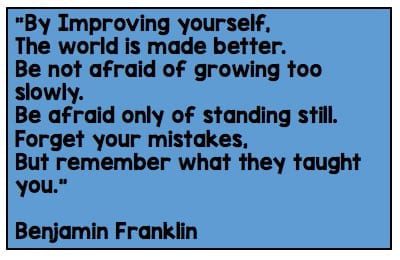
- Judy LoBianco (@jlobianc) a Supervisor of Health, Physical Education, and Nursing for a school district in New Jersey suggested, SHAPE America Teacher Toolbox and SHAPE Exchange at shapeamerica.org.
- Mike McClain (mcclain1950), Health and Physical Education Instructional Systems Specialist for DoDEA on Okinawa, likes sparkfamily.org(must purchase a SPARK program for access) and www. CDC.gov to “find out what the actual data and trends are for Health/Fitness.”
- Amy Prior (@priorteach) HS Health and Physical Education teacher and former T.O.Y. from Charlotte, NC recommends, “Ditch That Textbook” by Matt Miller.
- Patty Lanier (@luvtoplay) former elementary physical educator, now at the University of Central Florida, praised the book, “Originals” (How non-conformists move the world) by Adam Grant.
- Kevin Tiller (@physedreview) a very creative elementary physical educator and T.O.Y. in MA loves YOUTUBE. (And Star Wars so if you’re a fan, follow him on twitter!)
- Justin Schleider (@schleiderjustin) a K-8 physical educator who teaches in N.J. likes this site, nlpc.us (National Lesson Plan Creator on google docs).
- Brett Fuller (@BrettAFuller) a Supervisor of Physical Education in the Milwaukee Public School District suggested the site of a district physical educator, WI TOY, Mike Beringer (@PEberingmx) http://fairviewpe.blogspot.com
- Terry Jones (@tjwrestler) a Physical Education Content Specialist for CO Dept. of Education likes edutopia.org and @edutopia.
- Amanda Stanec (@MoveLiveLearn) a physical educator who has taught at the University level and now consults and runs MLL, priased the book, “Standards-Based Physical Education Curriculum Development” by Lund & Tannehill.
This list of 10 is by no means complete! I want to thank these terrific physical educators for sharing their favorite resources, and others who wrote me with theirs. Sorry that space doesn’t allow me to include everyone’s excellent contributions.
III. What Makes a Resource Great?
First, let’s qualify our resources. For the sake of time, we’ll focus on content (I place content in a broad category, the “What to teach”) and what physical educators search for the most — lesson plans and new ideas they can implement with their students.
Many of the websites already cited in Section 2 (and countless others) provide free or low cost lesson plans. And, if you attend a conference (and I hope you make every effort to attend district, state, and national opportunities) you are likely to leave with access to curriculum samples. How can you quickly determine which are worthy of trying with your students? Try this 3-step assessment I developed more than two decades ago for SPARK:
When you receive a new lesson/unit plan or idea, run it through your filter. Ask yourself:
- Is it good to go? (No red flags in content, terminology, district policies, etc.)
- Does it need modification? (There are parts you like, and others you can fix or improve upon.)
- No thanks. (You know your school and students best and this lesson plan just won’t work in my program even with modification.)
Once a lesson plan is vetted this way, then I suggest my final “A-E” standards before using:
A. Is there a standard(s) being addressed?
B. Is there an assessment tool to demonstrate student learning of that standard.
C. Are the activities aligned to the standard(s)?
D. Are the activities inclusive/differentiated, do they foster at least 50% MVPA (moderate to vigorous physical activity), and are they enjoyable.
E. Can I make a connection to out of class and “take it home” applications?
Now by all means, there is much more to consider. Are there technologies that might streamline/simplify instruction, reduce management time, increase learning receptivity and/or “stickiness,” and more. Think about the criteria I listed and embellish with your own good ideas. YOU are the expert – no one knows your environment, facilities, students, etc. like you do — and understand best what you need for professional growth.
Gathering Quality Instructional Resources:
Many of the websites previously cited in Section 2 offer free or low-cost PD for physical educators. In addition to those, here are a few (sorry, so many to list!) of my favorites:
- Peaceful Playgrounds (www.peacefulplaygrounds.com then see Online Courses): PP has some excellent and unique online courses such as: Bullying Prevention for Teachers, Playground Supervisor Training, Grant Writing 101 Training, to name a few. Also, check out their free and on-demand webinars, and subscribe to their newsletter. The latter will let you know of live webinar dates and topics.
- SPARK e-cademy (www.sparkpe.org): This site not only hosts courses in all SPARK PE programs but also has a library of webinars on timely topics – many applying technology to PE classes. Additionally, e-cademy can track your online PD online and from conferences you attend. SPARK also offers free webinars monthly that feature superstar physical educators as well as current and past TOY’s (Teachers of the Year.)
- PHYSEDagogy (@PHYSEDagogy & www.physedagogy.com): This is a group of innovative and technology savvy physical educators who have banded together to bring free professional development (and lesson plan/assessment tools) to the online PE community. They host high quality, excellent sessions featuring some of the top thought leaders of the day. Follow them on Twitter and learn when their next virtual conference is.
Notes:
- Two outstanding sites you must include while Gathering resources are SHAPEamerica and PE Central (mentioned in Section 2 and websites provided there).
- SPARK program courses may be taken for graduate units of credit and SPARK offers Institutes each summer in San Diego.
- I am a consultant to Peaceful Playgrounds non-profit foundation, and a member of the SPARK Advisory Council.
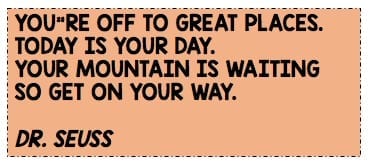
Closing Thoughts : I think we have gathered a lot of physical education resources and I hope you’re already starting to think about building your professional growth library!
Remember, the idea is to “Grow4It!” in BIG and BOLD ways. If you are spending too much time in your comfort zone, consider leaping out to where the magic happens!
Next time, we’ll look at the 4 in Grow4It! as in “4mulating a plan for professional growth.” Until then, good luck Gathering your resources!
This post brought to you by Peaceful Playgrounds
Follow Peaceful Playgrounds @recessdoctor
Part 1 — The G in Grow stands for Gather
A rolling stone may Gather no moss, but a physical educator must Gather resources to stay relevant. Those who prepare well and embrace professional growth can move beyond relevancy to exemplary.
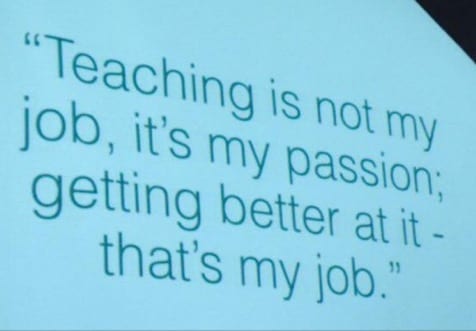
We’re going to examine Gathering resources in two parts. This first of two articles on the G in Gather will focus on “Human Resources.” No, not the HR department companies use to recruit and retain employees. The kind we physical educators can use to help us successfully navigate our professional growth paths. They comprise our Professional Learning Network (PNL). Much more about them shortly. But now…
Let’s begin our professional growth journey with a question,
Do you want to be a really GREAT (and more effective) teacher for your students, parents, and administration at your school?
If so, what does being a great teacher look and sound like? What does that mean in terms of your program, your content selection, your instructional style?
I believe truly great teachers have the following 5 “Human Resources” arrows in their quivers:
1. Preparation and Organization:
We all know the value of this, yet many of us could benefit from a P and O tune up. Who’s the most organized teacher on your staff? How does she (he) prepare her learning environment, her units, her lessons? What protocols does she establish at the beginning of the year and how does she reinforce them as the months go by? Does she utilize technology to streamline and simplify roll taking, assessment, grading? Is it possible to observe her teach a lesson that showcases her organization and planning?
Action: Gather information from this preparation/organization mentor and add her/him to your PLN.
2. Subject Matter Expertise:
Physical educators must be exceptional instructors in myriad individual sports, team sports, track and field, dance, aquatics, martial arts, group fitness, just to name a few. Add to that a deep knowledge of the physical education standards (1), and don’t forget to layer on a need to understand teaching progressions that extend skill basics like throwing and catching, to sophisticated games like cricket, football, ultimate, and more.
Could you benefit from learning how to teach Pilates, Functional Fitness, intermediate Hip Hop? Taking classes is an obvious answer, but let’s suggest something a little different. Invite someone from your school, family/community to teach a class(es) for your students in a subject area you’re not familiar with and/or comfortable teaching. Ask your guest instructor (And/or maybe a Nationally Board Certified Teacher 2) if you could videotape the class for review later – and ask if she will review and critique it with you. Have an excused student point an iPad/video camera (on a table or similar) at the teacher while YOU participate with your students. A good rule of thumb to enable fast learning of a kinesthetic subject is to:
1. Participate as a student would — at least twice.
2. Team-teach — you lead a couple segments you’re most competent with and assist the main instructor.
3. Team-teach — you lead most of the class and the expert assists you.
4. Watch yourself on videotape and solicit feedback from the mentor teacher.
Action: Gather information from this subject matter mentor and add her/him to your PLN.

3. Instructional Expertise:
A great lesson plan in the hands of a mediocre teacher is likely a mediocre lesson. A mediocre lesson plan in the hands of a great teacher is very likely a great lesson. We all know that WHAT you teach is important, but HOW you teach it makes all the difference in terms of student learning.
Who is that teacher(s) at your school (or within your PLN) that is consistently creative, empowering students, and incorporating useful technologies? Who might watch a videotape of your instruction and give you useful feedback? Personally, I believe the best thing any of us can do as teachers is to view videotape of ourselves with a mentor and a good assessment tool to guide the process. Note: If you’d like a sample instructional assessment tool, email me at pr********@*******su.edu. My colleagues and I at SPARK PE wrote a number of these over the years. Just let me know if you teach elementary, middle or high school physical education.
Action: Gather information from this instructional mentor and add her/him to your PLN.
4. Relationships with Students and Parents:
Great teachers develop loving and respectful relationships with their students and their parents. They frequently communicate about what students are learning, doing, and achieving in their classroom. One of my favorite sayings is, “Don’t wait until you’re thirsty to go to the well.” Have a group of parents that know you and your program best and are willing to support you if/when you need it.
Use these relationships to better understand the community you teach in. For example, in a school district about 5 miles away from me there was a much publicized and contentious lawsuit against a supplemental physical education program that was being provided to the elementary schools (free) by an outside non-profit. It was a variation of Yoga, modified to be developmentally appropriate for children. Eventually, after great expense a judge finally ruled the Yoga classes could continue — they were not religious in nature. I sometimes wonder if the divisive and costly issue would have been avoided if the unit was simply called, “Power Stretching”…
As an Athletic Director, Head Coach, and PE Dept. Head, I would interview prospective teachers, coaches, and employees who would come in contact with kids. I was always hoping to hear, “I love kids.” Great teachers love their students and care deeply about their development and futures. When love and caring comprise the foundation, students try harder. They want to do well for the teacher who is their champion.
Great teachers adapt to the way individual students learn, they don’t try to wedge students into one or two narrow teaching styles or strategies. Teachers that differentiate learning show they care about individuals and their needs. This establishes an atmosphere of respect for each young person and fosters positive relationship building.
Action: Gather “great teaching capital” by building relationships with your students and parents.
5. Social Media Utilization:
As I was preparing to write this article, I asked physical educators, “What is your favorite PE resource?” The most common answer was Twitter and Voxer, because of the people they met there. Once again, the “Human Resource.”
If you are a physical educator and have not yet tried either or both of these networks, I strongly encourage you to do so. They’ll connect you to colleagues in your community, your state, your country, and your world. You can ask for help, (e.g.) “My gym is closed for repairs next week and I’m in a tiny classroom with 45 3rd graders. I need ideas!” Or you can post a video of a lesson segment you did that was particularly creative and successful; then enjoy the feedback you receive. You can have a conversation with like-minded people you’ve never even met and discuss topics like standards-based grading, or what’s the best way to assess a particular national standard at a grade level. Via Twitter and Voxer you build and diversify your PLN and gather valuable resources such as: lesson plans, professional development (free PD is plentiful), the latest apps, tools for advocacy, and much more. There are many more social media sites of course, but I’ve found that physical educator’s go-to sources are Twitter and Voxer.
Action: Gather subject matter knowledge, instructional expertise, technology tools, and a supportive PE network by engaging in social media and continue to build your PLN.
___________________________________________________________________________________
Wrapping it Up:
My top 5 is by no means complete or comprehensive. What would you add? What do YOU think are the characteristics of a great physical educator?
After making time to reflect, ask yourself, “What kind of teacher do I want to be in 3 years? 5 years?” We’ll talk more about that next time, AND, we’ll delve into the 2nd part of Gather to include:
1. Non “Human” resources.
2. What makes a resource great?
3. How can we vet potential resources?
4. Which resources are the favorites of leading physical educators?
And a lot more! So join us next time for the 2nd part of Gather and we’ll continue to Grow 4 it! in BIG and BOLD ways!
References:
(1) NASPE-National Standards for Physical Education from SHAPE. SHAPE America’s National Standards define what a student should know and be able to do as result of a quality physical education program.
(2) National Board Certified Teacher – Created by teachers, for teachers, National Board Certification is the profession’s mark of accomplished teaching.
This post brought to you through support from Peaceful Playgrounds
Follow Peaceful Playgrounds at @recessdoctor



Leave A Comment